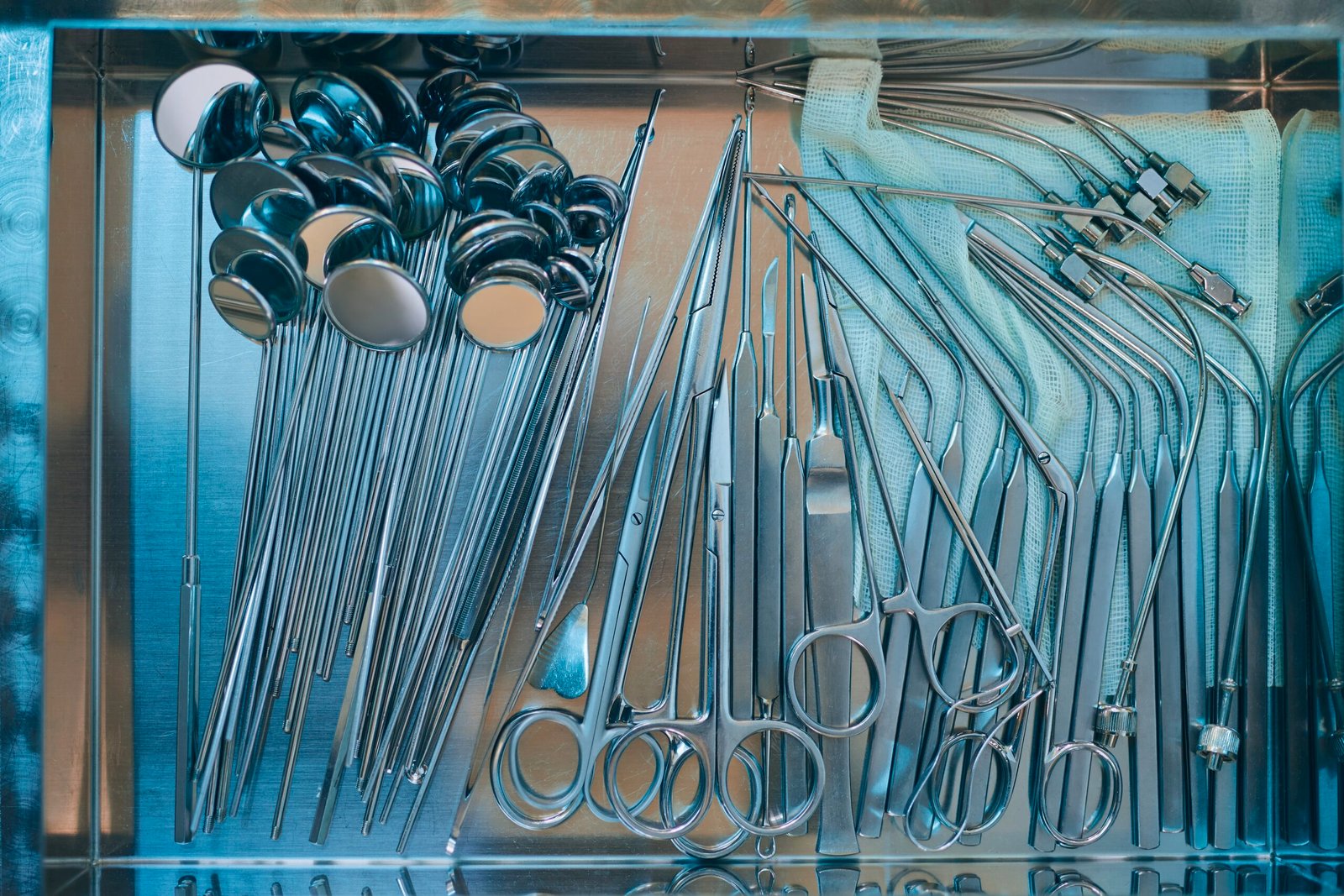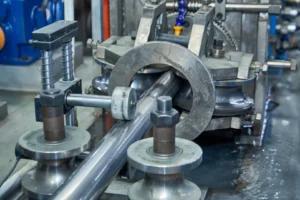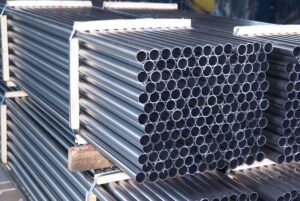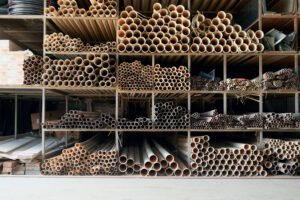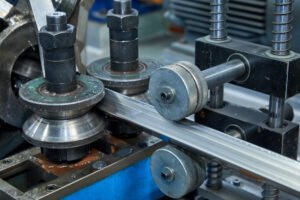Oil & Gas Case Study: Improving Pipeline Production with a Stainless Steel Pipe Machine
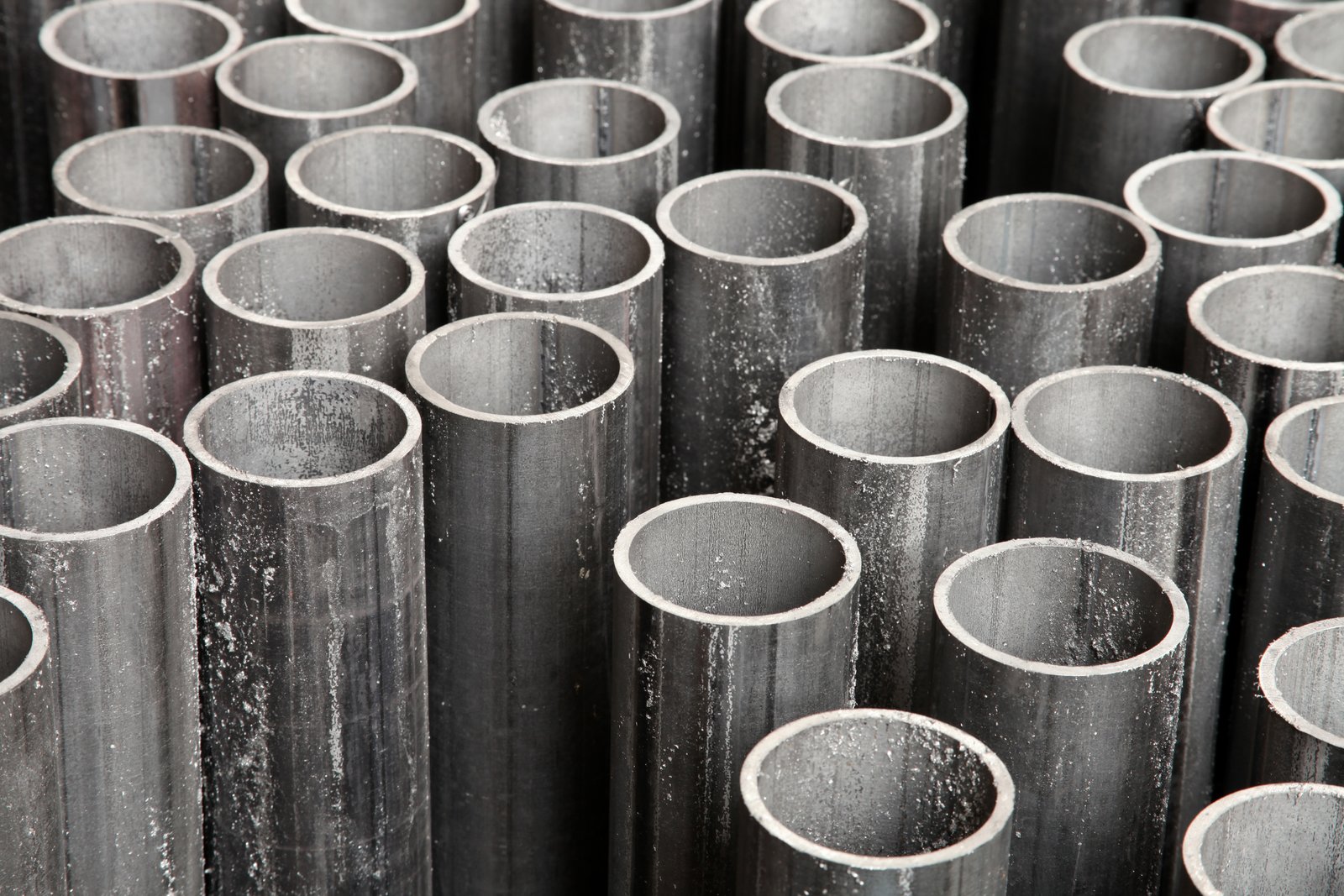
Facing relentless corrosion and efficiency pressures in the oil and gas industry can feel like a losing battle. The constant threat of pipeline failures, costly downtime, and material waste can severely impact your bottom line and reputation. We provide advanced stainless steel pipe machines that directly tackle these challenges.
A stainless steel pipe machine addresses critical oil and gas production challenges by enabling the in-house manufacturing of highly corrosion-resistant and dimensionally precise pipelines. This technology enhances operational safety, significantly reduces material waste through superior forming accuracy, and boosts overall output with automated, high-speed production capabilities.
I've seen firsthand how the right technology can completely transform a production facility. This isn't just about upgrading a single piece of equipment; it's about adopting a new manufacturing philosophy that prioritizes precision, durability, and long-term value. Let me walk you through how one of our partners in the oil and gas sector navigated this journey, turning their most significant challenges into their greatest competitive advantages.
The conversation around pipeline production is shifting. For years, the focus was primarily on volume, with traditional materials like carbon steel dominating the landscape1. However, as drilling operations venture into more demanding environments with higher pressures and more corrosive substances like sour gas (H₂S), the material science has had to evolve. This has brought stainless steel and its alloys to the forefront. But simply switching materials isn't enough. The manufacturing process itself must be elevated to match. A high-grade stainless steel pipe is only as good as the precision with which it's welded and formed. This case study isn't just about a machine; it's a critical look at how investing in advanced production technology is no longer a luxury but a fundamental necessity for survival and growth in the modern energy sector.
What was the initial pipeline production challenge faced in the oil and gas sector?
Are your pipeline production lines struggling with the high demands of the oil and gas industry? These challenges, from corrosive material handling to inconsistent quality, often lead to budget overruns and safety concerns. The solution begins with pinpointing the exact sources of inefficiency and risk.
The initial pipeline production challenges were rooted in three core areas: severe material corrosion from aggressive chemicals, operational inefficiencies causing low throughput and high scrap rates, and the difficulty in consistently meeting stringent API (American Petroleum Institute) quality and safety standards with aging equipment.
Before partnering with us, one of our clients, a major pipeline producer for offshore projects in the Gulf of Mexico, was grappling with a cascade of issues that threatened their market position. Their existing production lines, which were designed for less demanding applications, proved to be a significant bottleneck. They faced unacceptable failure rates during hydrostatic testing, primarily due to inconsistent weld integrity and dimensional inaccuracies in the pipes. This not only led to immense material waste but also caused project delays that incurred substantial financial penalties. The operators were in a constant state of reaction, manually adjusting settings on their outdated mills to combat variations in material thickness and weld quality. This manual-intensive process was slow, unreliable, and simply couldn't deliver the precision required for modern high-pressure applications. They were caught in a vicious cycle of low efficiency, high costs, and escalating client dissatisfaction, realizing that a fundamental technological overhaul was their only viable path forward. This situation is all too common, where legacy systems can no longer keep pace with the industry's evolution towards more extreme and demanding operational environments. The need for a proactive, precision-based manufacturing strategy became painfully clear.
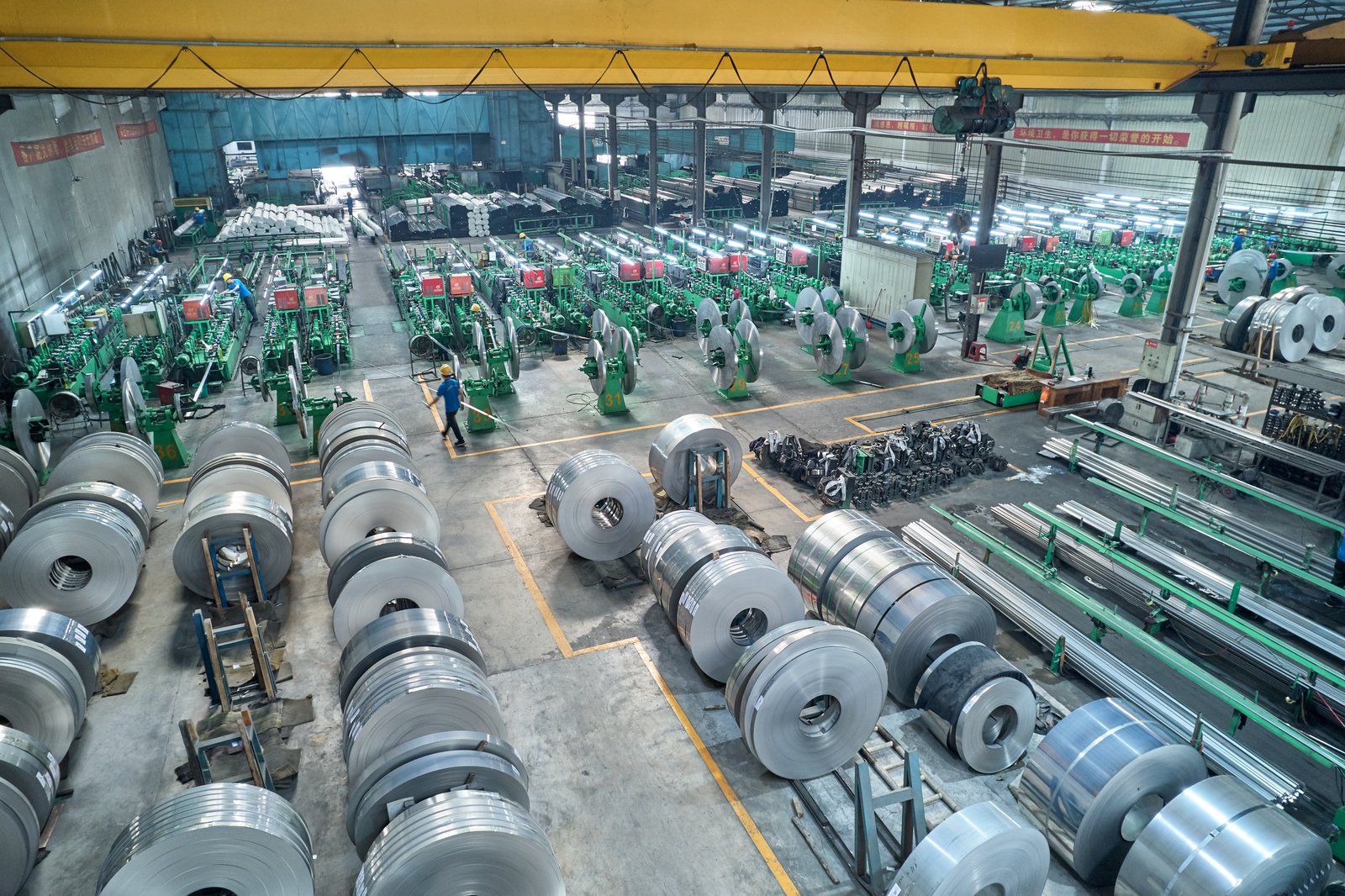
The challenges faced by this client were a microcosm of the wider industry's struggle to adapt. The confluence of material science limitations, outdated mechanical processes, and tightening regulatory frameworks created a perfect storm of production hurdles. Analyzing their situation provides a clear blueprint of the problems that modern tube mill technology is designed to solve. It’s a story that begins with the material itself and extends deep into the mechanical and financial realities of their day-to-day operations.
The Crippling Effects of Material Corrosion and Inconsistency
Our client's primary battle was against corrosion. The transport of sour gas, rich in hydrogen sulfide (H₂S), was rapidly degrading their carbon steel pipes, leading to a frighteningly high risk of leaks and environmental incidents. Internally, they tracked a 15% failure rate during the crucial hydrostatic testing phase, a direct result of micro-fissures and inconsistent weld seams that were invisible to the naked eye but became critical weaknesses under pressure. These failures translated into an annual material and rework cost that exceeded $2 million, a figure that was simply unsustainable.
Beyond the weld, the dimensional inconsistency of the pipes was a major concern. Their old mill struggled to maintain a uniform wall thickness, especially when processing higher-grade alloys. This variation created unpredictable weak points along the pipeline's length, making it impossible to guarantee compliance with API 5L standards, a non-negotiable requirement for their customers. The inability to produce a certifiably consistent product was not just a technical failure; it was a commercial liability that put multi-million dollar contracts at risk.
The problem was exacerbated by the raw material itself. Even slight variations in coil thickness or hardness would throw their old machinery out of calibration, leading to hours of downtime for manual readjustments. Each adjustment was a gamble, often resulting in significant lengths of scrapped pipe before the process was stabilized. This reactive approach to production was a constant drain on resources, manpower, and morale.
Operational Bottlenecks and Spiraling Production Costs
Efficiency on the production floor was at an all-time low. The client’s process was plagued by bottlenecks, from slow coil changes to the painstaking adjustments required for each production run. The time taken to switch between different pipe diameters was often measured in hours, not minutes, rendering their operations inflexible and unable to respond quickly to urgent customer orders. This lack of agility meant they were often forced to turn down lucrative, short-turnaround projects.
The financial bleed was most evident in their material utilization. Their scrap rate, which includes test failures and setup waste, hovered around 8%—a staggering figure in an industry where material costs are a significant portion of the final product price. In contrast, modern lines like ours target a scrap rate of less than 2%. The table below illustrates the stark contrast between their legacy system and the performance benchmarks of our intelligent production lines. This comparison clarified the immense potential for cost savings.
| Metric | Legacy Production Line | XZS Intelligent Production Line |
|---|---|---|
| Setup Time (Size Change) | 3-4 hours | < 1 hour |
| Production Speed (Avg.) | 10 meters/min | 15-18 meters/min |
| Material Scrap Rate | ~8% | < 2% |
| Weld Quality Control | Manual / Spot-check | Automated / Continuous |
| Precision Tolerance | > ±0.15 mm | ≤ ±0.05 mm |
This data paints a clear picture: their operational model was fundamentally uncompetitive. High labor costs were another factor, as skilled operators were tied up performing manual adjustments that should have been automated. The cost per meter of pipe was inflated not by material costs alone, but by the gross inefficiencies embedded in their production process, from wasted material to wasted man-hours.
Navigating Stricter Regulatory and Safety Mandates
The oil and gas industry is, rightly, governed by some of the most stringent safety and quality regulations in the world. For our client, compliance with standards like API 5L was not just a goal but a license to operate2. However, their existing technology made this a constant struggle. The inconsistency of their output meant that each batch of pipe required extensive, costly third-party testing and certification, and even then, rejections were common.
This regulatory pressure was a constant source of anxiety. The risk of a catastrophic failure in the field due to a substandard pipe was immense, carrying with it the potential for devastating environmental damage, loss of life, and legal repercussions that could bankrupt the company. Furthermore, their inability to consistently meet and exceed these standards was damaging their reputation. Major energy corporations were beginning to favor suppliers who could provide not just a product, but documented proof of a superior, stable, and highly controlled manufacturing process.
Their leadership understood that the market was evolving. It was no longer enough to simply produce a pipe that met the minimum specification. Leading clients were now demanding tighter tolerances, superior material properties, and comprehensive quality assurance data for every single piece. The client realized they were at a critical inflection point: either invest in technology that could meet the future of the industry or risk being relegated to low-margin, less critical applications.
Stainless steel resists corrosion betterTrue
Stainless steel's chromium content forms a passive oxide layer that protects against corrosive substances like H₂S, unlike carbon steel.
Manual adjustments improve precisionFalse
Manual adjustments on outdated mills actually cause dimensional inconsistencies, while automated systems maintain ±0.05mm precision.
How does the stainless steel pipe machine offer a solution to these production challenges?
Are you seeking a definitive solution to pipeline production inconsistencies? The problem lies in outdated technology that can't deliver the required precision. By integrating advanced automation and robust engineering, our stainless steel pipe machines provide the control and reliability your operations demand.
A modern stainless steel pipe machine offers a comprehensive solution by combining fully automated PLC controls for unparalleled precision, an optimized forming process that achieves up to 98% material utilization, and a robust, heavy-duty build that ensures long-term operational stability and consistent quality output.
When we began collaborating with the Gulf Coast pipeline producer, our initial focus was on demonstrating how specific technological features of our machines directly address their most pressing pain points. It wasn't about a generic sales pitch; it was about drawing a straight line from their challenges—corrosion, waste, and non-compliance—to our solutions. We moved the conversation from their problems to the tangible mechanics of the remedy. We explained that the path to resolving their issues wasn't just about using stainless steel; it was about how the material is handled, formed, and welded. The intelligence built into our production lines provides a level of control that was previously unattainable for them. This shift in perspective was crucial. They started to see the machine not as a capital expense, but as a strategic asset capable of solving deep-rooted operational problems and creating new commercial opportunities. We delved into the core components—the CNC-machined frame, the energy-saving high-frequency welder, and the intuitive PLC interface—explaining how each element contributes to a more efficient, precise, and reliable production ecosystem. This detailed, solutions-oriented approach built the confidence they needed to move forward with a significant technological investment.
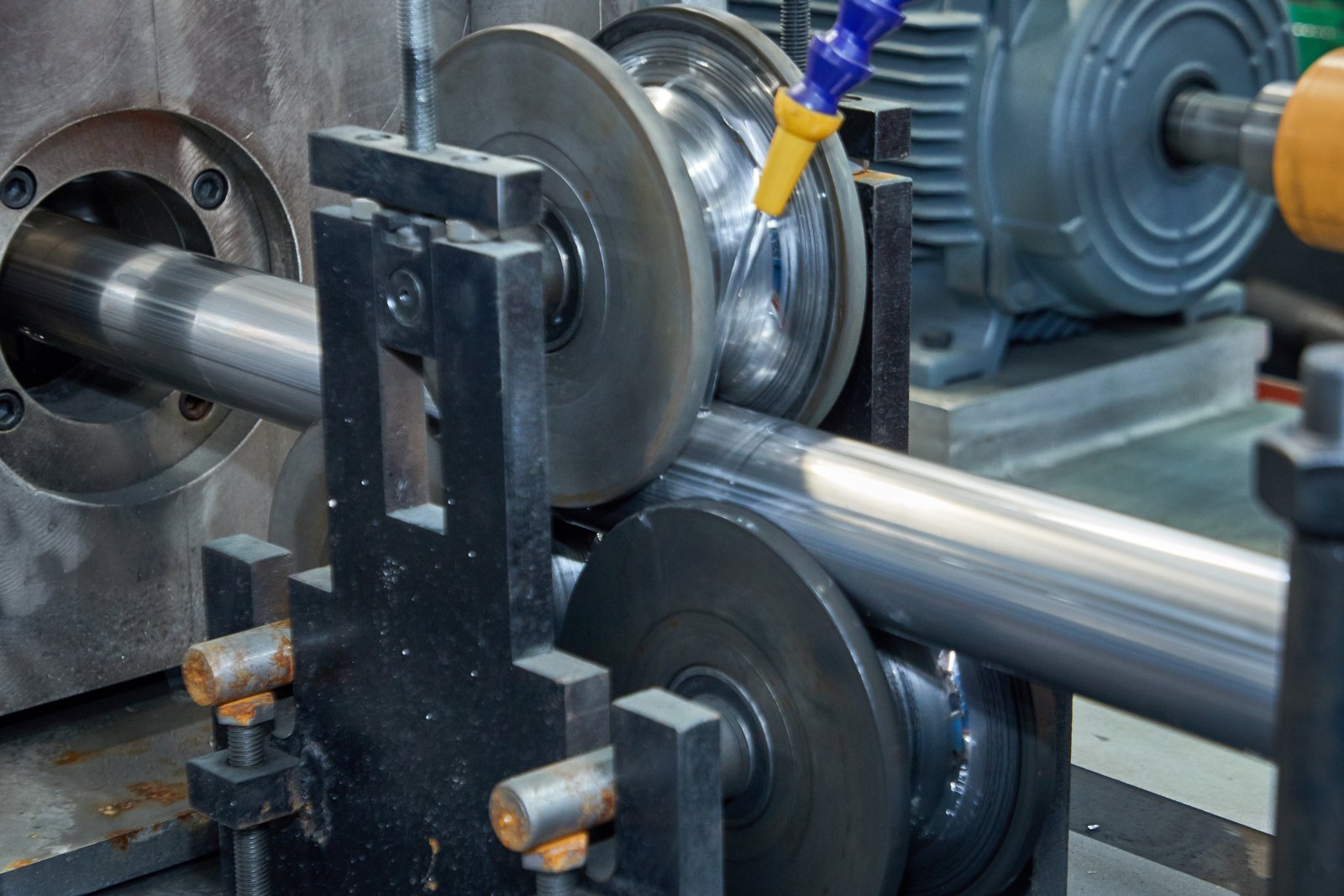
Dive-Deeper paragraph: The solution we engineered for our client was multifaceted, targeting their core challenges of precision, efficiency, and reliability with a host of integrated technologies. It was a holistic upgrade designed not just to replace their old mill, but to revolutionize their entire production philosophy. By breaking down the components of our XZS intelligent precision tube mill line, we can see exactly how each feature contributes to solving the complex puzzle of modern pipeline manufacturing.
Achieving Unprecedented Precision with Automated Control
The cornerstone of the solution lies in precision. For the oil and gas industry, a pipe's dimensional accuracy is directly linked to its safety and performance. Our solution centered on the machine's fully automated control system, managed by a PLC and a user-friendly touch-screen interface. This system takes the guesswork and manual error out of the equation. We demonstrated how our machine could consistently produce pipes with a tolerance of ≤ ±0.05 mm, a level of accuracy that their previous equipment couldn't approach.
This precision is achieved through a closed-loop feedback system. Sensors continuously monitor the forming and welding process, and the PLC makes real-time micro-adjustments to the rollers and welding parameters. This ensures that every meter of pipe maintains a uniform wall thickness, diameter, and straightness, directly addressing their primary reason for failing hydrostatic tests and API 5L compliance audits. For a client who had spent years battling inconsistency, the ability to simply input the desired specifications and trust the machine to execute flawlessly was a revolutionary concept.
We worked with their team to run a trial using their own stainless steel coils. They witnessed firsthand how our system automatically compensated for slight variations in material hardness, something their operators previously had to do by "feel." This automated control is what guarantees that the first meter of pipe in a production run is identical to the last, transforming their quality control from a reactive, inspection-based process to a proactive, process-controlled one.
Maximizing Material Yield and Energy Efficiency
The financial viability of the solution was just as critical as its technical performance. We tackled their high operational costs by focusing on two key areas: material utilization and energy consumption. Our machine's forming section is meticulously designed through advanced computer simulation to shape the steel strip into a tube with minimal stress and deformation. This optimized process, combined with a precision cutting system, allows for a material utilization rate of up to 98%.
We translated this percentage into a concrete financial projection for the client. By reducing their scrap rate from 8% to under 2%, we calculated an annual raw material saving of over $1.5 million. This single metric made the return on investment (ROI) crystal clear. It reframed the machine's purchase price as a self-liquidating investment. This dramatic reduction in waste not only impacts the bottom line but also contributes to a more sustainable manufacturing footprint.
Furthermore, we introduced them to our energy-saving, solid-state high-frequency induction welder. Compared to older, vacuum-tube-based welders, this technology is significantly more efficient, converting more electrical energy into welding power and reducing standby consumption. While a smaller part of the overall cost structure, these energy savings contribute to a lower operational expenditure (OpEx) over the machine's lifespan, adding to the overall financial attractiveness of the investment and showcasing our commitment to efficient, modern engineering.
Built for Durability: The Impact of a Robust Machine Frame
A precision machine can only maintain its accuracy if it is built on a stable foundation. This is a point I always stress with clients. The relentless vibration and stress of 24/7 pipe production can cause lesser machines to lose their alignment and calibration over time. This is why our XZS machines are constructed on robust, heavy-duty frames made from high-quality steel, with all critical surfaces being precision-machined in our own CNC centers.
We explained to the client that this robust frame is not an over-engineered luxury; it's essential for long-term reliability. A rigid frame minimizes vibration during operation, which is critical for maintaining the perfect alignment of the forming rollers and the integrity of the welding seam. This stability ensures that the machine will continue to produce pipes with the same ≤ ±0.05 mm tolerance year after year, protecting their investment and guaranteeing consistent product quality for the long haul.
We provided them with case data from other clients in heavy industries, showing how our machines have performed over 5+ years of continuous operation with minimal need for realignment or major maintenance. This focus on durability and a low Total Cost of Ownership (TCO) resonated with their leadership, who were tired of the constant maintenance and repairs required by their old equipment. They understood that investing in a robustly built machine from an ISO 9001–certified manufacturer like us meant investing in peace of mind and predictable performance for the next decade and beyond.
PLC ensures ≤ ±0.05mm toleranceTrue
The closed-loop PLC system makes real-time adjustments to maintain ultra-precise pipe dimensions.
Material waste exceeds 5%False
Advanced forming technology reduces scrap rate to under 2%, achieving 98% material utilization.
What specific results were achieved using the stainless steel pipe machine in pipeline production?
Wondering what real-world results you can expect from upgrading your production line? The problem is that promises often fall short of reality. We ground our solutions in tangible outcomes, demonstrating measurable improvements in efficiency, quality, and profitability for our clients.
The implementation of the stainless steel pipe machine led to a dramatic reduction in hydrostatic test failures to below 1%, a decrease in material scrap rates from 8% to under 2%, and a 50% increase in production throughput, significantly boosting profitability and market responsiveness.
The transformation at the Gulf Coast facility after the commissioning of our intelligent production line was nothing short of remarkable. The theoretical benefits we had discussed during our initial consultations became their new operational reality. Within the first six months, the data they collected painted a powerful picture of success, validating their investment decision and fundamentally altering their position in the market. The results weren't confined to a single metric; they were holistic, impacting everything from their financial statements and production schedules to their employee morale and client relationships. The constant stress of fighting fires and managing quality crises was replaced by the confidence that comes from having a stable, predictable, and highly capable manufacturing process. Their team could now shift its focus from reactive problem-solving to proactive process improvement and business development. This allowed them to not only satisfy their existing contracts with unprecedented quality but also to aggressively pursue new, more demanding projects that were previously beyond their technical reach. The story of their success is best told through the hard numbers and the tangible business impact they achieved.

The success of this project was measured against the specific, data-driven goals we established with the client at the outset. We moved beyond anecdotal evidence to quantify the impact of the new stainless steel pipe machine across the most critical areas of their business: quality control, production efficiency, and overall market competitiveness. The results provided a compelling testament to the power of investing in precision manufacturing technology.
Dramatic Reduction in Failure Rates and Material Waste
The most immediate and impactful result was the drastic improvement in product quality. Their historical hydrostatic test failure rate of 15%, which had been a major drain on resources and profitability, plummeted to less than 1% within the first quarter of operation. This was a direct consequence of the consistent weld integrity and precise dimensional control delivered by our machine. The near-elimination of these failures meant that the rework, re-testing, and associated labor costs that had plagued them virtually disappeared.
This quality improvement went hand-in-hand with a massive reduction in material waste. Their scrap rate, which had been a painful 8%, fell to an average of 1.8%. This was achieved through the combination of the machine's precision, which eliminated setup waste, and the near-zero rate of quality rejections. Based on their annual consumption of stainless steel, this reduction in scrap translated to a direct, verifiable cost saving of over $1.5 million in the first year alone. This financial impact provided a swift and powerful return on their investment.
This newfound consistency also streamlined their entire quality assurance process. With the process itself being so stable and predictable, they could move to a more efficient statistical process control (SPC) model, reducing the need for costly and time-consuming 100% inspection on certain parameters. This saved them both time and money, further accelerating their production cycle.
Boosting Production Throughput and Meeting Demand
The client's ability to serve their market was completely transformed. The combination of higher running speeds and drastically reduced downtime for size changes resulted in a significant increase in overall output. Their average production speed increased from 10 meters per minute to 15 meters per minute for their most common pipe sizes—a 50% increase. While this seems incremental, it meant they could produce an additional 2,400 meters of pipe in a single 8-hour shift.
Furthermore, the "Quick-change" tooling system we implemented reduced the time required to switch between different pipe diameters from over three hours to less than 60 minutes. This newfound agility allowed them to accept urgent, high-margin orders from their clients, something they could never have done with their old equipment. They were no longer constrained by long setup times and could optimize their production schedule for maximum profitability, not just for minimizing changeovers.
This increased capacity and flexibility had a direct impact on their top-line revenue. Within the first year, they were able to take on two major new contracts that they previously would have had to decline. The XZS production line didn't just make their existing operation more efficient; it expanded the total addressable market for their business.
Exceeding Quality Standards and Enhancing Market Reputation
The long-term strategic benefit of the investment was the enhancement of their market reputation. Armed with a production line that could hold tolerances of ≤ ±0.05 mm, they could now confidently bid on the most demanding projects, including those requiring exotic alloys and critical application specifications. They were no longer just a supplier; they became a preferred technology partner for their key clients.
They successfully secured a new certification for producing duplex stainless steel pipes, a high-margin market segment they had been locked out of. Their improved quality control and the comprehensive data logging from our PLC system gave their clients an unprecedented level of transparency and confidence. They could provide batch-level data on welding parameters and dimensional accuracy, turning their quality from a claim into a documented fact.
This elevation in their technical capabilities and reputation had a tangible effect on their business. They were able to command a higher price point for their premium products, improving their overall profit margins. The success of the project became a powerful marketing tool in itself—a case study they could present to prospective clients to prove their commitment to quality and technology. The investment in our machine ultimately paid dividends far beyond the factory floor, strengthening their brand and securing their future in a competitive global market.
Failure rates dropped below 1%True
The new machine reduced hydrostatic test failures from 15% to under 1% due to improved weld integrity.
Material waste increased to 10%False
Scrap rates actually decreased from 8% to 1.8%, saving $1.5 million annually.
How was the performance of the stainless steel pipe machine evaluated and assessed?
Investing in new technology requires a clear method for judging its success. The ambiguity of performance claims can be frustrating. We believe in a transparent, data-driven approach to evaluation, ensuring you can clearly assess the value and ROI of your investment with us.
The machine's performance was evaluated using a comprehensive framework that included tracking pre- and post-installation Key Performance Indicators (KPIs), conducting on-site operational audits with operator feedback, and analyzing long-term reliability and maintenance cost data to calculate the Total Cost of Ownership (TCO).
To ensure the success of our partnership with the Gulf Coast pipeline producer, we mutually agreed that a rigorous and transparent evaluation process was essential. This wasn't about us simply installing a machine and walking away. It was about proving its value through objective, measurable data and qualitative feedback. We established a formal assessment plan before the first crate even arrived at their facility. The goal was to create a clear, unambiguous picture of the machine's impact on their operations, finances, and overall business health. This collaborative approach to performance assessment ensured that both our teams were aligned on the definition of success. It involved setting benchmarks based on their historical data and then systematically tracking our progress against those benchmarks at the three-month, six-month, and one-year milestones. This structured evaluation provided them with the concrete data they needed for their internal reports and gave us invaluable feedback to ensure the system was optimized for their specific needs. This process is standard for us at XZS; we see ourselves as long-term partners, and that partnership is built on a foundation of proven, verifiable performance.
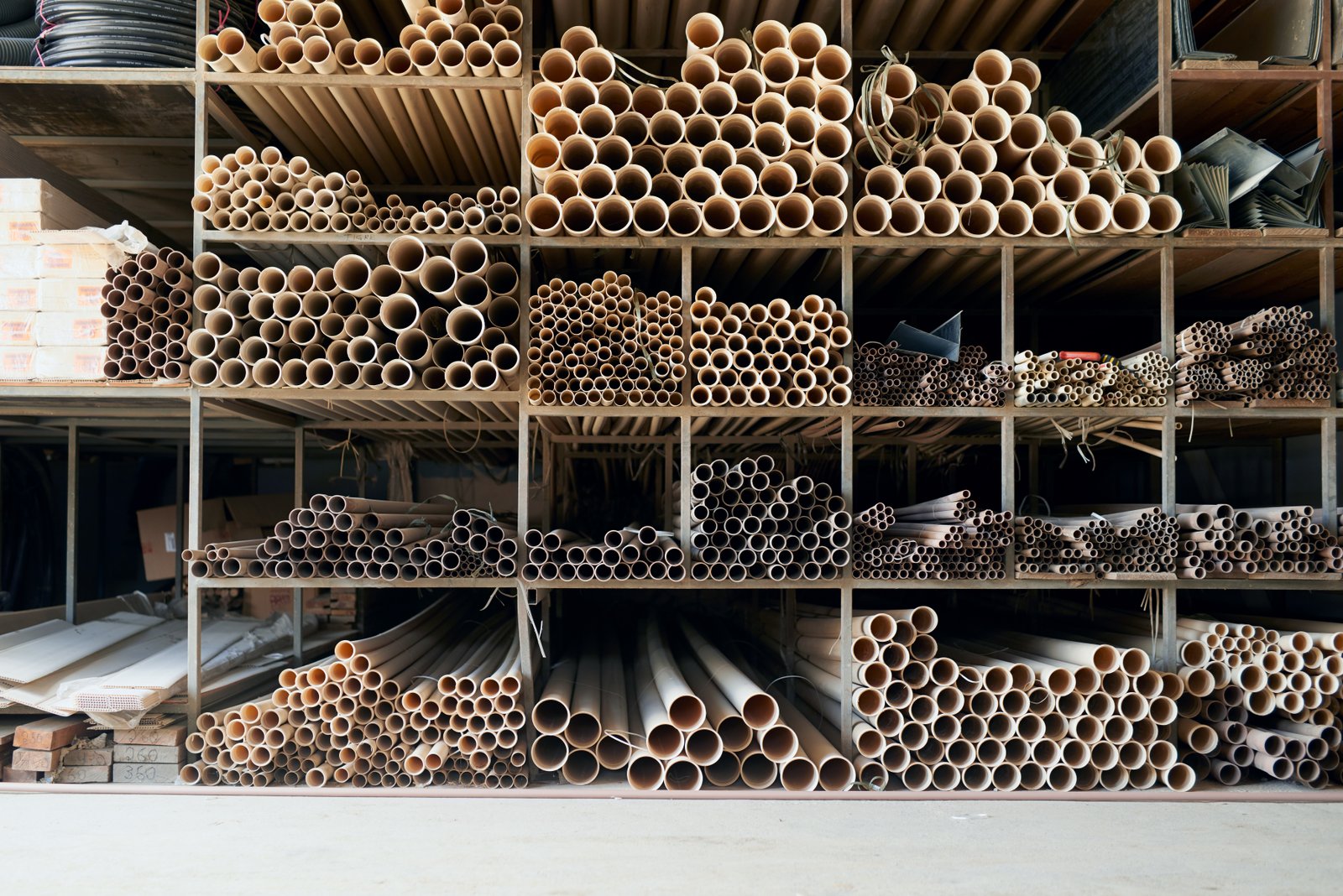
A successful project is one that can be measured. For our client, the evaluation of the new stainless steel pipe machine was a systematic process, not an afterthought. We worked alongside their engineering and finance teams to create a robust framework for assessing performance, ensuring the results were credible, quantifiable, and directly tied to their business objectives. This process was built on three pillars: quantitative KPI tracking, qualitative operational audits, and a long-term financial analysis.
Key Performance Indicator (KPI) Tracking: Pre- and Post-Implementation
The foundation of our assessment was data. We began by mining the client's historical production logs to establish a clear baseline for their key performance indicators. The primary KPIs we mutually agreed to track were Overall Equipment Effectiveness (OEE), material scrap rate, production output in meters per hour, and the quality control first-pass yield (the inverse of their failure rate). This gave us a "before" snapshot of their operation, warts and all.
Once our XZS line was commissioned, we began tracking these same KPIs on a weekly and monthly basis. The data was automatically logged by the machine's PLC system, ensuring accuracy and eliminating manual tracking errors. At the six-month mark, we held a formal review. The data showed a 40% improvement in OEE, driven by higher availability (less downtime) and performance (higher speed). The scrap rate had fallen from 8% to 1.8%, and the first-pass yield had risen from 85% to 99.2%.
These weren't just abstract numbers. We plugged them directly into their costing models to quantify the financial impact. The KPI dashboard became a central tool for their management team, providing a real-time view of the production floor's health and the ROI of their investment. This data-first approach removed subjectivity and allowed us to have fact-based conversations about performance and any areas for further optimization.
On-Site Audits and Operator Feedback
While data tells much of the story, it doesn't tell all of it. As part of our comprehensive after-sales service, my engineering team conducted on-site performance audits at the three-month and one-year marks. These weren't just inspections; they were collaborative working sessions with the client's production team. We observed the machine under normal operating conditions, analyzed its output, and, most importantly, we listened.
We held structured feedback sessions with the machine operators and maintenance staff. This qualitative data was invaluable. The operators praised the intuitive nature of the touch-screen PLC, noting that it had reduced the training time for new staff by half. They highlighted the quick-change tooling as a "game-changer," giving them the flexibility to respond to schedule changes without the stress and physical effort required by the old system. Their feedback confirmed that the machine wasn't just technically superior, but also more ergonomic and user-friendly, which contributed to higher morale and operator ownership.
The maintenance team reported a significant reduction in unplanned downtime. They were able to move from a reactive "firefighting" maintenance schedule to a proactive, preventative one based on the machine's predictable service intervals. This feedback loop between quantitative data and qualitative human experience gave us a complete 360-degree view of the machine's performance.
Long-Term Reliability and Maintenance Cost Analysis
A machine's true value is revealed over its entire lifecycle. The final pillar of our evaluation was a long-term analysis of reliability and the Total Cost of Ownership (TCO). After the first year of operation, we sat down with their finance and maintenance departments to conduct a comprehensive review. We analyzed all maintenance logs, records of spare part consumption, and any instances of unscheduled downtime.
The results were compelling. Unscheduled downtime related to machine failure was virtually zero for the entire year. Their consumption of spare parts was limited to a few low-cost wear items, such as cutting blades, which was in stark contrast to the frequent replacement of motors and mechanical components on their old equipment. We calculated the TCO, factoring in the initial purchase price, installation, energy consumption, maintenance costs, and the massive savings from reduced scrap.
This analysis demonstrated that while the initial capital investment was significant, the TCO was substantially lower than that of their previous, seemingly "cheaper" line. This provided their executive team with a powerful justification for future investments in high-quality, precision equipment. It proved that choosing a machine based on a robust build and long-term reliability from an ISO 9001-certified partner like XZS was a far more astute financial decision than simply opting for the lowest upfront cost.
KPI tracking used historical dataTrue
The evaluation process began by analyzing the client's historical production logs to establish baseline KPIs before implementing the new machine.
Operator feedback was irrelevantFalse
Structured feedback sessions with machine operators provided valuable qualitative data about usability and ergonomics that complemented the quantitative KPI data.
What insights and recommendations can be drawn from this case study for future applications?
Looking to future-proof your manufacturing operations? The problem is that today's solutions can quickly become tomorrow's liabilities if not chosen strategically. Based on proven results, we recommend a forward-thinking approach that prioritizes precision, automation, and collaborative partnership for sustainable growth.
The key insight is that investing in precision automation is no longer an option but a strategic imperative. We recommend that producers prioritize manufacturing tolerance as a key metric, embrace fully automated systems for a competitive edge, and select a technology supplier who acts as a collaborative partner.
This case study with the Gulf Coast pipeline producer offers more than just a single story of success; it provides a clear and actionable blueprint for any manufacturer in a demanding industry looking to secure a competitive and profitable future. Reflecting on this project, the lessons learned extend far beyond the specifics of pipeline production. They touch on the fundamental principles of modern manufacturing in an era of tightening standards, global competition, and rapid technological advancement. The journey of this client from a state of reactive crisis management to proactive market leadership holds powerful insights for anyone considering a significant capital investment in their production capabilities. The following recommendations are distilled from this experience, designed to help you make strategic decisions that will pay dividends for years to come. These are the principles that I believe will separate the industry leaders from the followers in the decade to come. They represent a shift in thinking—from buying machinery to investing in a comprehensive manufacturing strategy.
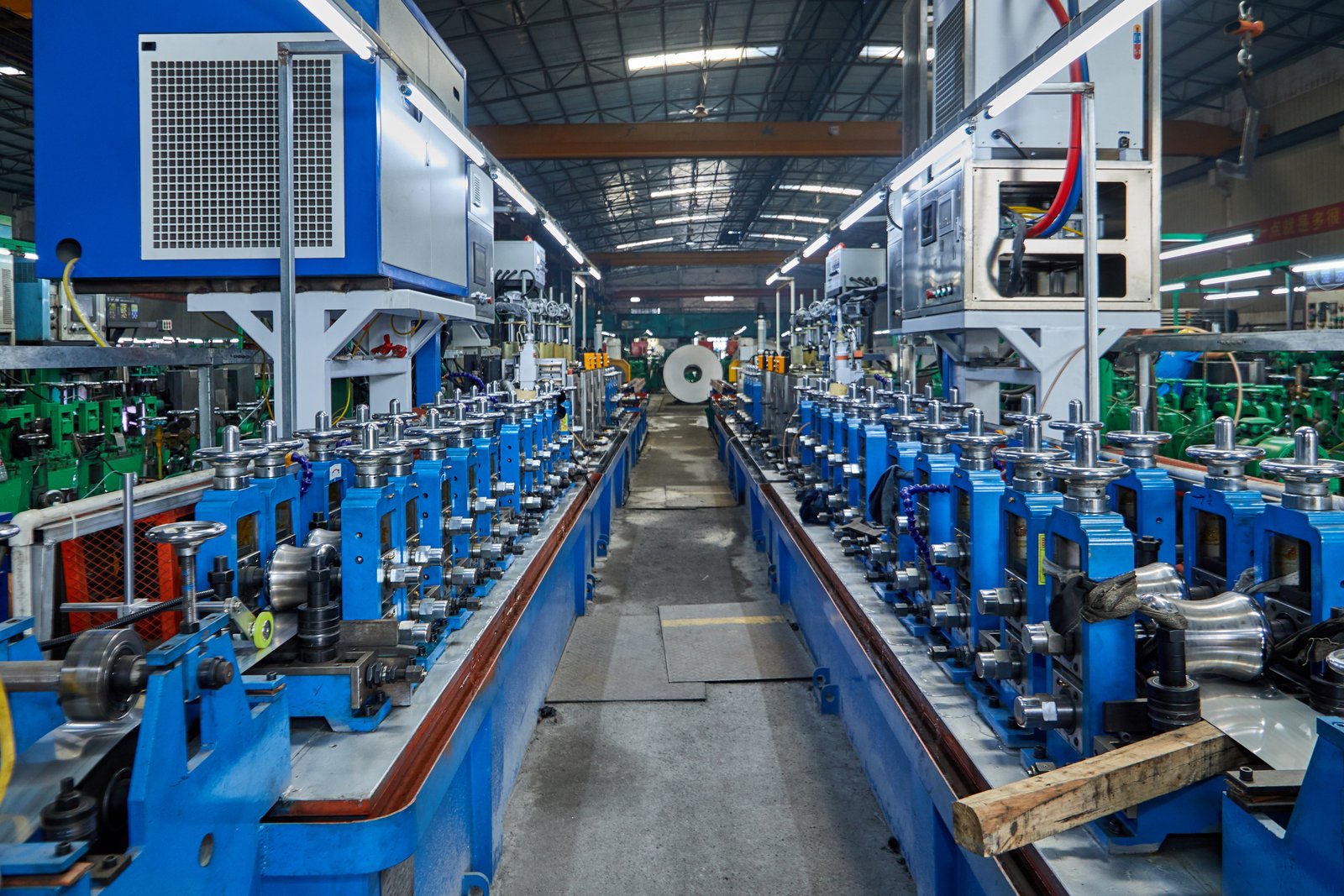
The successful transformation of our client's operations provides a rich source of strategic insights. For other industrial pipe and tube producers, whether in oil and gas, automotive, or construction, these lessons are directly applicable. They serve as a guide for navigating future investments and building a resilient, future-ready manufacturing enterprise. Based on the clear outcomes of this case study, I offer three core recommendations.
Recommendation: Prioritize Precision as a Non-Negotiable Standard
The single most important lesson from this case study is that precision pays. The client's initial problems—high failure rates, material waste, and regulatory non-compliance—were all symptoms of a single root cause: a lack of precision. My first and strongest recommendation is to shift your evaluation criteria. Stop thinking about "good enough" tolerance and start treating world-class precision, like our ≤ ±0.05 mm standard3, as a non-negotiable requirement for any new equipment.
Investing in a high-precision machine is a direct investment in your bottom line. As we saw, it drastically reduces scrap, eliminates costly rework, and lowers the risk of catastrophic field failures. This moves quality control from a cost center (inspection and rejection) to a value driver (process-inherent quality). When you can guarantee and document a higher level of precision, you can access more demanding, higher-margin markets and build a reputation as a top-tier supplier.
Therefore, when you evaluate a new tube mill, look beyond the price tag and the stated production speed. Scrutinize the engineering behind its precision. Ask for data on its long-term tolerance stability. Inquire about the control systems that maintain this precision. Making precision your number one priority is the most strategic decision you can make to reduce costs, mitigate risk, and enhance profitability.
Recommendation: Embrace Automation for a Competitive Edge
My second recommendation is to fully embrace automation. This case study demonstrates that automation's primary benefit is not, as is commonly believed, simply the reduction of labor costs. Its true value lies in delivering unwavering consistency. The automated PLC control system on our XZS line was the key to eliminating the human-variable-induced inconsistencies that plagued our client's old process.
Automation creates a stable, predictable, and highly repeatable manufacturing environment. This consistency is what allows you to optimize material usage, guarantee quality, and run your operations at peak efficiency 24/7. Furthermore, intelligent automation, which includes features like data logging and quick-change tooling, provides a level of operational agility that is impossible to achieve with manual or semi-automated systems. As demonstrated, this agility allows you to be more responsive to customer needs and capture market opportunities that your less-automated competitors cannot.
For any producer looking to upgrade, I urge you to opt for the highest level of automation you can. A fully automated system managed by a central PLC is not a luxury; it is the new standard for competitive manufacturing. It’s the engine that drives the precision and efficiency that the modern market demands. Resisting this shift is to accept a permanent competitive disadvantage.
Insight: The Strategic Value of a Collaborative Technology Partner
This case study highlights a critical insight: you are not just buying a machine; you are choosing a technology partner4. The success of this project was not solely due to the hardware. It was the result of a deep collaboration that began with understanding the client's core challenges and continued through installation, training, and long-term performance evaluation.
My final recommendation is to look beyond the supplier's product catalog and evaluate their capacity as a partner. Do they have the R&D capabilities to help you with complex applications? Do they offer comprehensive turnkey solutions, including integration and training? Are they an ISO 9001-certified manufacturer with a proven track record and robust after-sales support? Choosing a partner like XZS, one who is invested in your success for the long term, is crucial.
A true partner brings expertise, not just equipment. They help you de-risk your investment by providing data, case studies, and transparent performance assessments. They work with you to optimize your process and ensure you extract the maximum value from your technology. In an increasingly complex industrial landscape, having a knowledgeable and committed technology partner is an invaluable strategic asset.
Precision reduces material wasteTrue
High-precision manufacturing minimizes scrap and rework, directly improving profitability as shown in the case study.
Automation only saves labor costsFalse
Automation's primary value is ensuring consistency and repeatability, which enables quality optimization and operational agility beyond just labor savings.
Conclusion
Ultimately, this case study proves that investing in a high-precision, automated stainless steel pipe machine is a strategic imperative. It directly enhances production quality, boosts efficiency, and lowers operational risk, delivering a powerful return on investment and securing a competitive advantage in the demanding oil and gas market.
-
Discover the traditional benefits and limitations of carbon steel in pipelines ↩
-
Explore the significance of API 5L in ensuring pipeline reliability and safety ↩
-
Learn about the importance of precision standards in reducing waste and improving quality ↩
-
Understand the strategic benefits of choosing the right technology partner ↩
